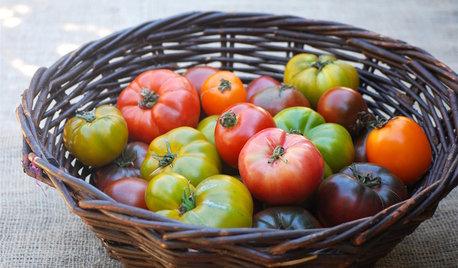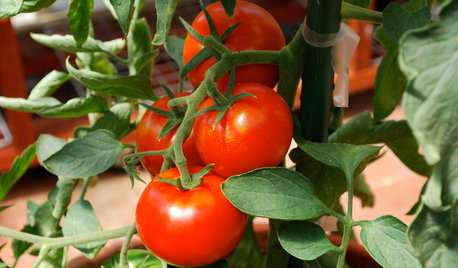tomato varieties for long island?
marcantonio
6 years ago
Related Stories

KITCHEN ISLANDSLet’s Go Island Hopping Again
Check out these 92 kitchens with binge-worthy islands in a variety of shapes, materials and styles
Full Story
EDIBLE GARDENS10 Delicious Heirloom Tomatoes to Grow This Summer
Irresistible heirlooms offer outstanding flavor and variety. Choose from a rainbow of colors in all shapes and sizes
Full Story
EDIBLE GARDENSSummer Crops: How to Grow Tomatoes
Plant tomato seedlings in spring for one of the best tastes of summer, fresh from your backyard
Full Story
GARDENING 101How to Grow Tomatoes in Pots
Don’t have much space for a garden? All you need is a sunny spot and a large container to grow this favorite summer crop
Full Story
KITCHEN ISLANDS11 Must-See Kitchen Islands
Consider these anything-but-ordinary designs to enhance cooking, prepping, storage, entertaining and more
Full Story
ARCHITECTUREHouzz Tour: Fresh Ideas in a Former Tomato Packing Shed
A formerly metal-clad structure is now a beautiful wood home designed to capture the light and preserve open space
Full Story
KITCHEN ISLANDSNew This Week: 4 Alternatives to a Big Kitchen Island
You don’t have go with the typical kitchen centerpiece. Consider these other options for prepping, cooking and gathering
Full Story
KITCHEN ISLANDS10 Knockout Kitchen Islands
For design inspiration, consider this collection of kitchen islands in a range of styles and configurations
Full Story
KITCHEN DESIGNKitchen Islands: Pendant Lights Done Right
How many, how big, and how high? Tips for choosing kitchen pendant lights
Full Story
KITCHEN DESIGNHow to Design a Kitchen Island
Size, seating height, all those appliance and storage options ... here's how to clear up the kitchen island confusion
Full Story





digdirt2
marcantonioOriginal Author
Related Professionals
Lakewood Landscape Architects & Landscape Designers · River Forest Landscape Architects & Landscape Designers · Tomball Landscape Architects & Landscape Designers · Conroe Landscape Contractors · Little Ferry Landscape Contractors · Live Oak Landscape Contractors · Petaluma Landscape Contractors · South Lake Tahoe Landscape Contractors · Coronado General Contractors · Kemp Mill General Contractors · Vincennes General Contractors · Waipahu General Contractors · Woodmere General Contractors · York Decks, Patios & Outdoor Enclosures · Randolph Decks, Patios & Outdoor Enclosuresfungus
digdirt2
billyberue
digdirt2
marcantonioOriginal Author
marcantonioOriginal Author